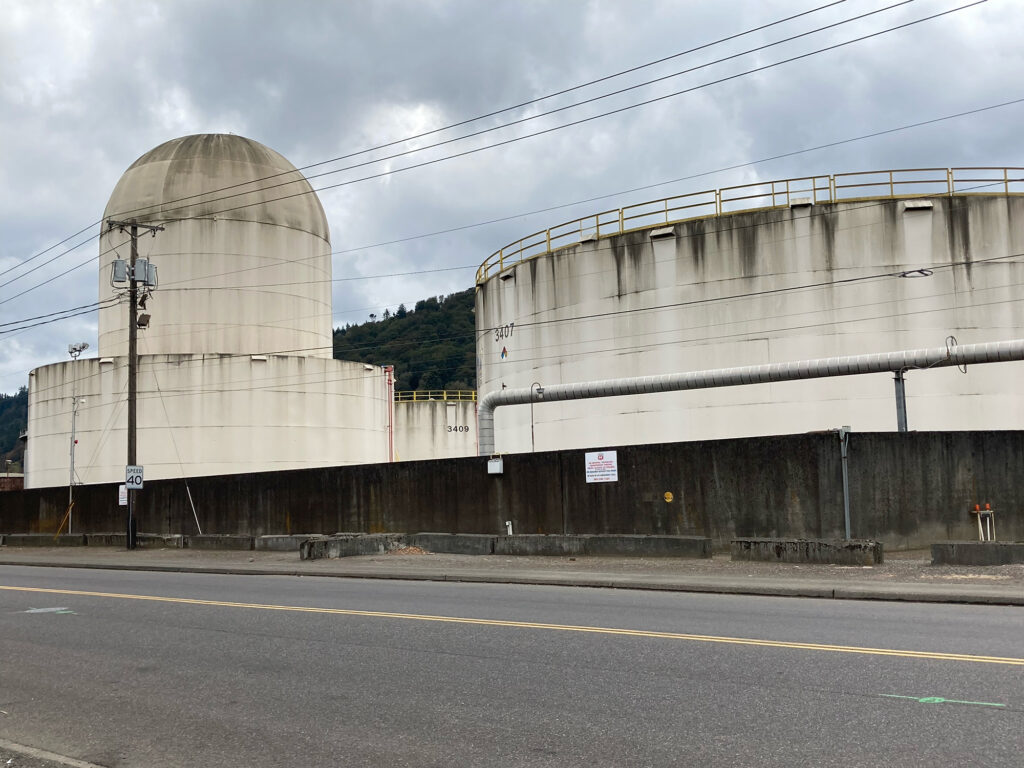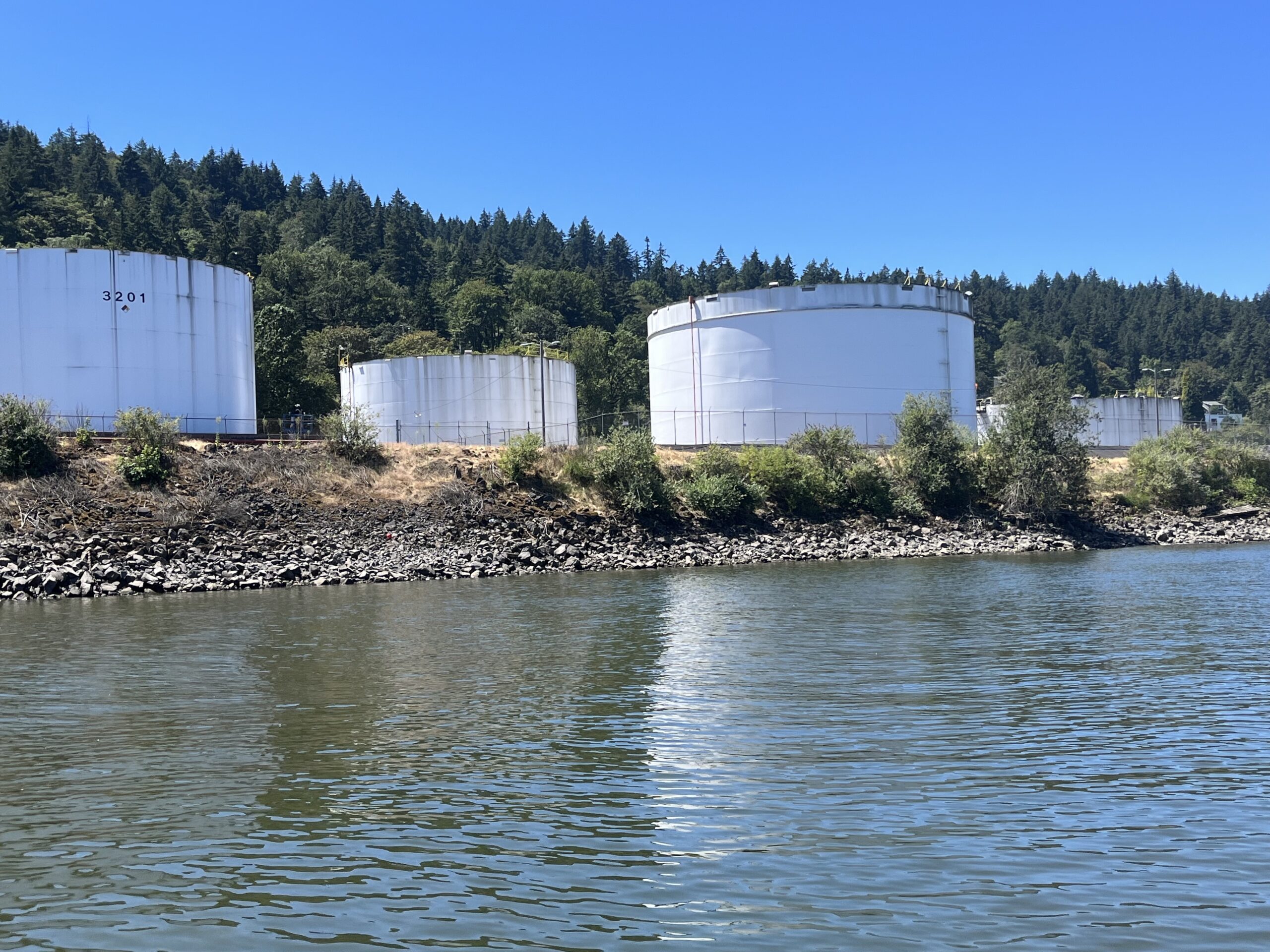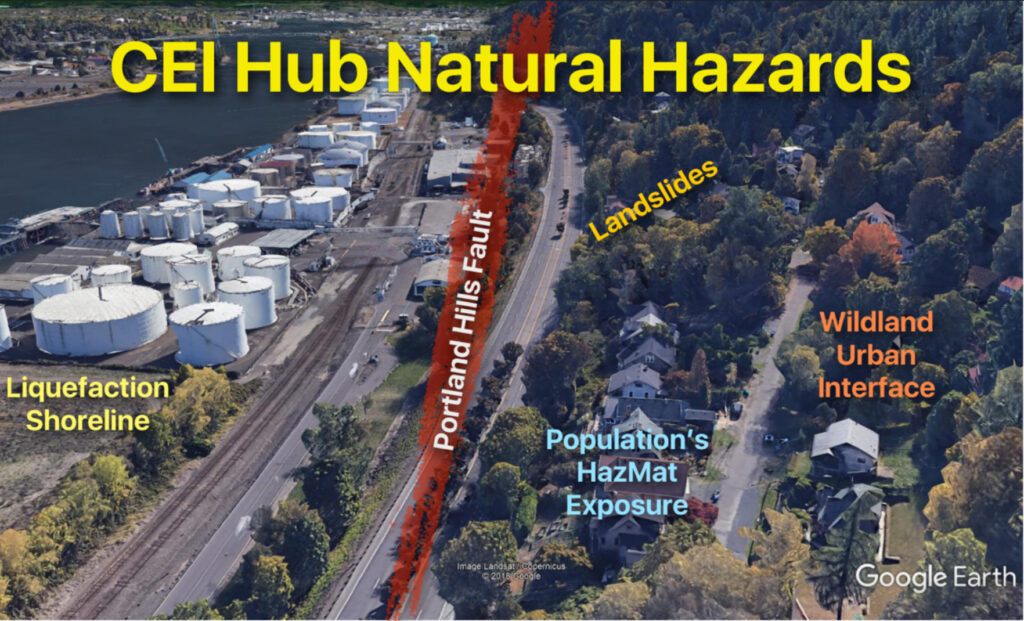As you’re traveling north toward St. Helens on the Highway 30, you’re looking to your left and you’re seeing this beautiful bucolic old growth forest, Forest Park, which happens to be the largest urban forest reserve in the entire country.
John Wasiutynski, Director of Sustainability for Multnomah County
And you look to the right and it’s doom. You see petroleum industry infrastructure, you see a lot of risk.
Michael Pouncil, Braided River Campaign
A few miles north of downtown Portland, along a six mile stretch of the Willamette, hundreds of tank farms— designated the Critical Energy Infrastructure (CEI) hub—store millions of gallons of gasoline, crude oil, fracked gas, and other toxic chemicals—90 percent of the fossil fuel consumed across the state of Oregon. The tank farms are built on a liquefaction zone and adjacent to several earthquake fault lines, where a magnitude 9.0 earthquake is predicted to strike within the next 50 years. When this earthquake hits, the CEI hub could become the site of the largest oil spill in history. This “industrial sanctuary” also exposes neighboring communities to the worst air pollution in the Portland area as well as ongoing risks of explosions. Although these enormous dangers are well known, industries and government officials have done little to ensure that the infrastructure is safe.






















